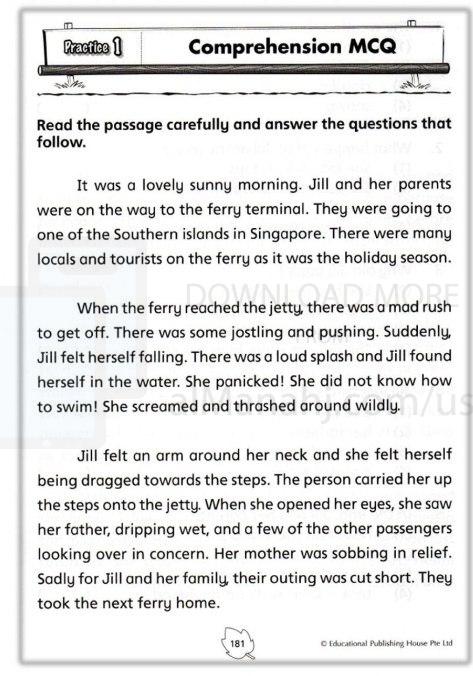File info: A Worksheet about Reading Comprehension in English for Grade 6 is a learning resource designed to improve students' reading comprehension skills and their ability to understand and interpret written texts. This worksheet typically includes passages or texts of varying lengths and genres, accompanied by a series of exercises and questions that assess students' comprehension and critical thinking abilities.
Here are some components and characteristics you might find in a Worksheet about Reading Comprehension in English for Grade 6:
1. Reading Passages: The worksheet provides students with a range of reading passages that are appropriate for their grade level. These passages may include fiction or non-fiction texts, such as narratives, informational articles, biographies, historical accounts, or persuasive essays. The passages are typically of varying lengths and complexity to cater to different reading abilities.
2. Comprehension Questions: Following each reading passage, students are presented with a set of questions that test their understanding of the text. These questions may include multiple-choice, true/false, matching, short answer, or open-ended questions. They are designed to assess various aspects of comprehension, including identifying main ideas, supporting details, author's purpose, making inferences, drawing conclusions, and evaluating the text.
3. Vocabulary Development: The worksheet may include vocabulary exercises that focus on important words or phrases found in the reading passages. Students may be asked to define vocabulary words, identify synonyms or antonyms, or use context clues to determine the meaning of unfamiliar words. These exercises help to expand students' vocabulary and enhance their understanding of the text.
4. Critical Thinking and Analysis: The questions in the worksheet often require students to engage in critical thinking and analytical skills. They may be asked to analyze the author's tone, identify literary devices, evaluate arguments or claims made in the text, compare and contrast information, or make predictions based on the text. These exercises encourage students to think deeply about the text and develop their ability to interpret and analyze written information.
5. Textual Evidence: Students may be prompted to provide evidence from the text to support their answers. This encourages them to refer back to specific parts of the passage and cite relevant information that supports their responses. It helps students develop skills in using textual evidence to justify their interpretations and conclusions.
6. Writing Extension: The worksheet may include a writing component where students are given a writing prompt or task related to the reading passage. This allows students to practice expressing their thoughts, opinions, or reflections based on the text they have read. They may be asked to write a summary, a personal response, an argumentative essay, or a creative piece inspired by the reading passage.
7. Answer Key: The worksheet typically includes an answer key that provides correct answers or suggested responses to the questions. This allows students to self-assess their work and helps teachers evaluate students' comprehension skills.
The Worksheet about Reading Comprehension in English for Grade 6 aims to develop students' ability to read and understand various types of written texts. It focuses on key reading comprehension skills such as identifying main ideas, making inferences, analyzing information, and drawing conclusions. By engaging with the exercises and activities in the worksheet, students enhance their reading comprehension, critical thinking, and analytical skills, which are essential for academic success in English. |
